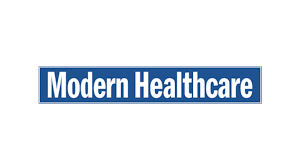 Safety/Quality
Safety/Quality
Certification options abound for infection preventionists

Patient safety and regulatory compliance demand thoroughly vetting those tasked with preventing healthcare-associated infections. But which certification is the right fit? Those who are new to infection control have a wide range of options for verifying their newly acquired expertise. More seasoned infection preventionists (IPs) also have a number of…
State AGs sue HHS over sweeping cuts

Editor's Note State attorneys general from 20 states filed suit to block major restructuring and layoffs at the Department of Health and Human Services (HHS), alleging the actions bypass Congress, violate federal law, and endanger public health. As detailed in a May 5 report from Fierce Healthcare, the lawsuit seeks…
Medtech giants move fast to blunt tariff impact without raising prices

Editor's Note Medtech companies are scrambling to contain the financial damage from rising tariffs without passing costs onto hospitals, according to a May 2 report in Modern Healthcare. Executives from industry leaders including Johnson & Johnson, GE HealthCare, and Intuitive Surgical outlined mitigation efforts during recent earnings calls, with most…
Leapfrog safety data spotlights persistent gaps; Florida hospitals sue

Editor's Note For the first time, the Spring 2025 Hospital Safety Grade from The Leapfrog Group introduces a “Straight A” designation for facilities that have earned top marks across five or more consecutive grading cycles. Published May 1, the latest edition of this biannual safety grade shows 346 hospitals—just 12%…
ASCA 2025: Leading lawmaker reflects on surgery center priorities

Editor's Note At the 2025 Ambulatory Surgery Center Association (ASCA) conference, discussion of legislative priorities extended beyond educational sessions. Thanks to a visit from the ranking lawmaker of the congressional subcommittee responsible for most healthcare policymaking, attendees also got first-hand insight into the latest negotiations on Capitol Hill. US Representative…
ASCA 2025: How accounting becomes an ASC revenue generator

Editor's Note Terry A. Bohlke, MSHA, CPA, CMA, CASC, emphasized that Rocky Mountain High Surgery Center is a pseudonym “to protect the innocent,” but the numbers he presented at the 2025 Ambulatory Surgery Center Association (ASCA) Conference & Expo in Denver last week were real enough. Based on actual scenarios…
ASCA 2025: Flexibility, foresight prevent costly ASC design mistakes

Editor's Note A thoughtful, operations-driven approach to ambulatory surgery center (ASC) facility design can prevent major delays, costly change orders, and inefficient workflows down the line, according to a May 2 presentation from Akshay Tavkar, MBA, CMPE, CASC, principal and managing director of Skyline Healthcare Solutions, LLC, at the Ambulatory…
Preadmission clinics drive better surgical outcomes, lower costs, fewer cancellations

Editor's Note Preadmission clinics (PACs) are supporting perioperative care by reducing complications, shortening hospital stays, and improving surgical outcomes—particularly for high-risk patients. As detailed in the April 2025 edition of ASA Monitor from the American Society of Anesthesiologists (ASA), PACs operate as multidisciplinary outpatient hubs where medical optimization, risk assessment,…
Virtual care, tech-enabled roles reshape nursing as leaders diverge on care redesign priorities

Editor's Note Virtual models and technology-driven roles are gaining ground, but alignment across nursing leadership tiers remains a critical challenge. According to the American Hospital Association (AHA) Center for Health Innovation’s summary of the March 2025 “Nursing Leadership Insight Study” done by the American Organization for Nursing Leadership, virtual care—including…
As healthcare faces skyrocketing cyberattacks, surgeons are urged to lead frontline defense

Editor’s Note Healthcare organizations are hemorrhaging millions to cybercrime and turning to medical staff as unlikely but indispensable defenders in the face of this growing threat. As detailed in a Cyber Security News April 29 article, healthcare remains the most expensive industry for data breaches, with the average cost reaching…

 Free Daily News
Free Daily News